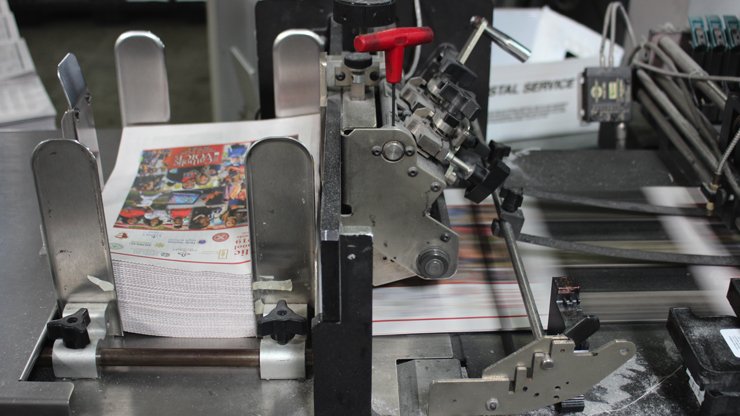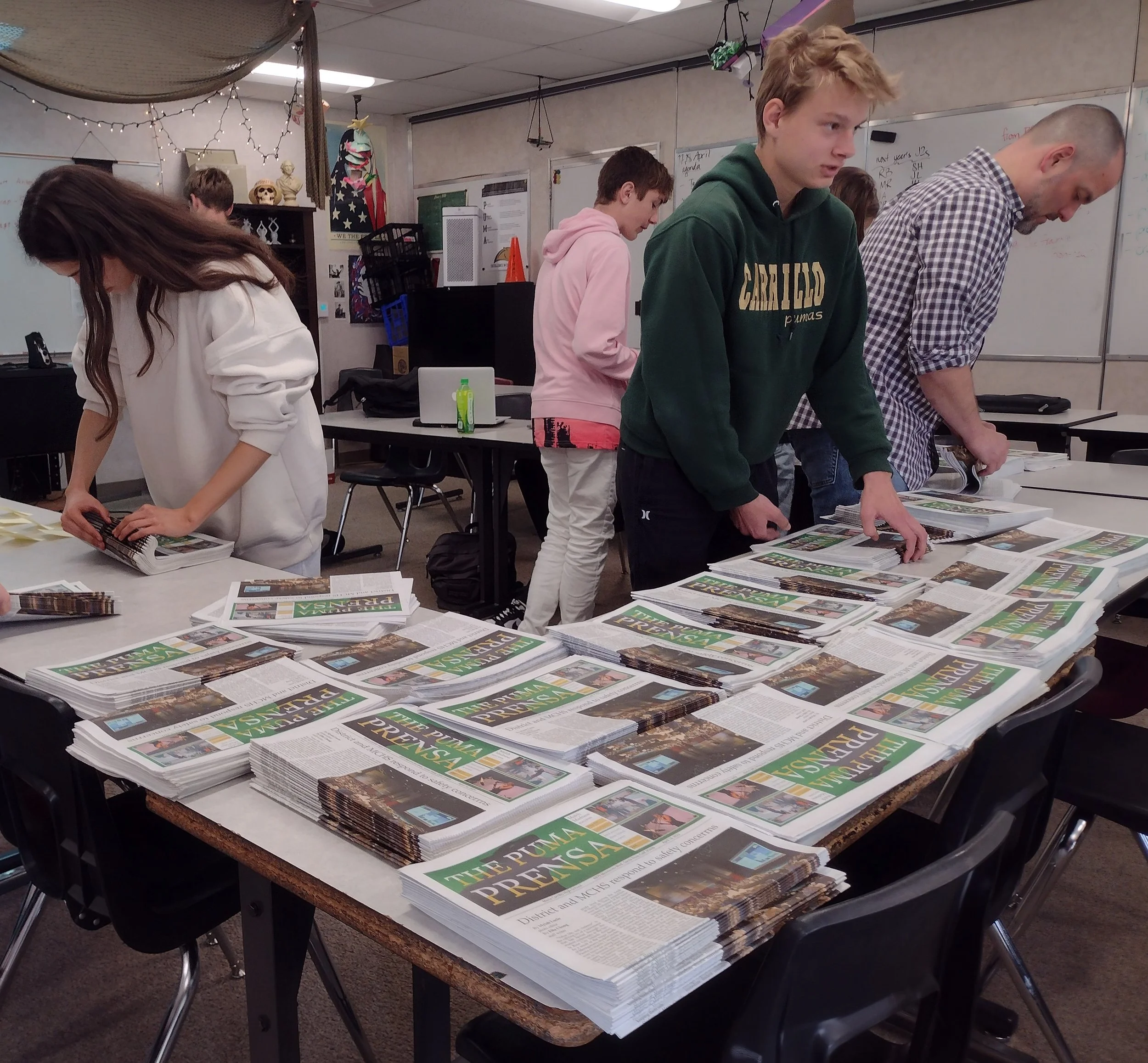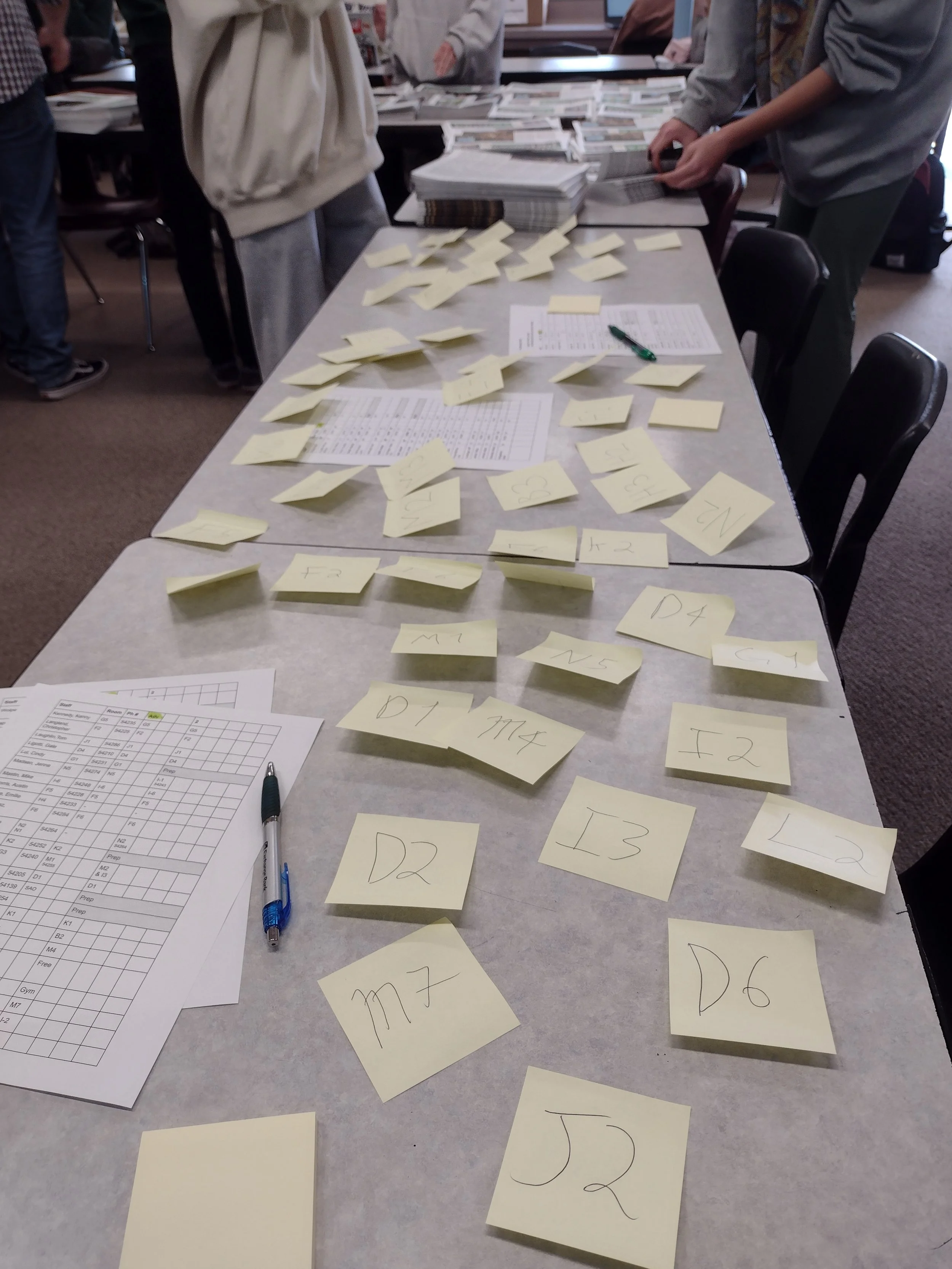Behind the Puma Prensa
Freshly printed newspapers that are being sorted by journalism students so they can be passed out to classrooms. (Photo: Annika Umholtz, The Puma Prensa)
By Annika Umholtz, staff writer, Emerson Parker, news editor
Once a month as you sit down in Advocacy, a brand new and freshly printed newspaper appears on your desk like magic. While it may seem mysterious, there’s a whole system behind the curtain in order to accomplish this significant achievement. But if this wizardry isn’t dazzling enough, there have been numerous improvements to the journalism program this year.
The Puma Prensa website was recently redesigned by web editors Christian Bon and Sophia Hughes, who made it more eye-catching and easy to navigate. Staff writer Kevin Wei made a documentary that covered the recent school protests—which can be found on the website and on the Puma Prensa YouTube channel. Even the Prensa logo was updated by Graphics Editor Jenny Lee in the last issue, and there’s been an addition of “fun stuff” like crosswords and word searches in the paper. But the change that journalism students have been most anticipating aired on March 30.
The Prensa’s brand new podcast, dubbed The Pawd, launched on Apple and Spotify. The first episode discussed school safety with Santa Rosa City Schools Board Trustee Omar Medina in light of the stabbing of Jayden Pienta, a student at Montgomery High School. “Making the podcast was always something I wanted to do, and it was the thing that I wanted to make happen for sure this year,” said Rose Cromwell, senior and one of the editors of The Puma Prensa. “Getting the equipment and figuring out how much money we wanted to invest in the podcast was the hardest part of getting started,” she said. But they pulled it off and released another episode on April 27 about the struggles of being transgender in schools. They’re also currently planning a third episode about economics in schools and in the real world, featuring Government and Macroeconomics teacher, Trevor Brady.
Just like the preparations that go into making the podcast, the newspaper itself is also an intricate process.
The Puma Prensa publishes a paper six to eight times a year. At the start of every journalism cycle, a brainstorming session is held. Students come up with two or three story ideas and the editors pick from them and assign people their official article for the month. It’s often the one that the student picked themselves. After story assignments, it’s crunch time. Emails are sent, people are interviewed, photos are taken, etc.
During the first semester journalism students had two to three weeks to complete the article draft, but in the second semester, there’s only about a week and a half to write the draft of a story. Not to mention the “drafts” have to essentially be finalized from the start in order to take some weight off of overworked editors and to avoid errors slipping through the cracks before printing. In order to cover the events in March, some stories were even written, edited, and published in only a day or two.
Then there’s layout. Journalism students use a program called InDesign to put everything together in a newspaper format, arranging ads, articles, and headlines every day after school and on one weekend day until the PDFs are due to the printer.
Newspapers being printed at FolgerGraphics. Photo from FolgerGraphics website.
The PDFs are sent off to Joe Vetter of Healdsburg Printing who works with Folger Graphics to get the papers printed, all of which costs about $1,440 to print each issue. Vetter delivers finished papers to MCHS a couple days after the PDFs have been submitted.
Journalism students sorting freshly printed newspapers to be passed out to classrooms. (Photo: Annika Umholtz, The Puma Prensa)
The Prensa does use classroom space and computers belonging to the school, but the newspaper doesn't receive any funding for its operations. Despite being a “school newspaper,” The Puma Prensa is not directly affiliated with Maria Carrillo High School; it is an independent student organization. This allows the Prensa to freely criticize the school and discuss problems without censorship from the school, but in order to keep printing the Prensa, the journalism program has to find their own source of revenue. This is done by relying on subscriptions and advertising sales. Because each issue of the newspaper that gets printed costs over a thousand dollars, journalism students are constantly on the lookout for opportunities to do their least favorite aspect of the class—contacting businesses and asking them to buy advertisements.
Once the freshly printed newspapers have finally arrived at MCHS, they are sorted into groups of 17 and labeled with sticky notes so they can later be brought to each Advocacy. Journalism students leave their morning class early to hand deliver them to the right locations.
Sticky notes with room numbers that journalism students are using to sort freshly printed newspapers that will be passed out to classrooms. (Photo: Annika Umholtz, The Puma Prensa)
A lot of effort and teamwork goes into this process because we care about you, our reading and watching and listening community, and we thought you might like a little peek into what happens behind the scenes.
Thank you for your support, and we hope you enjoy our work.




